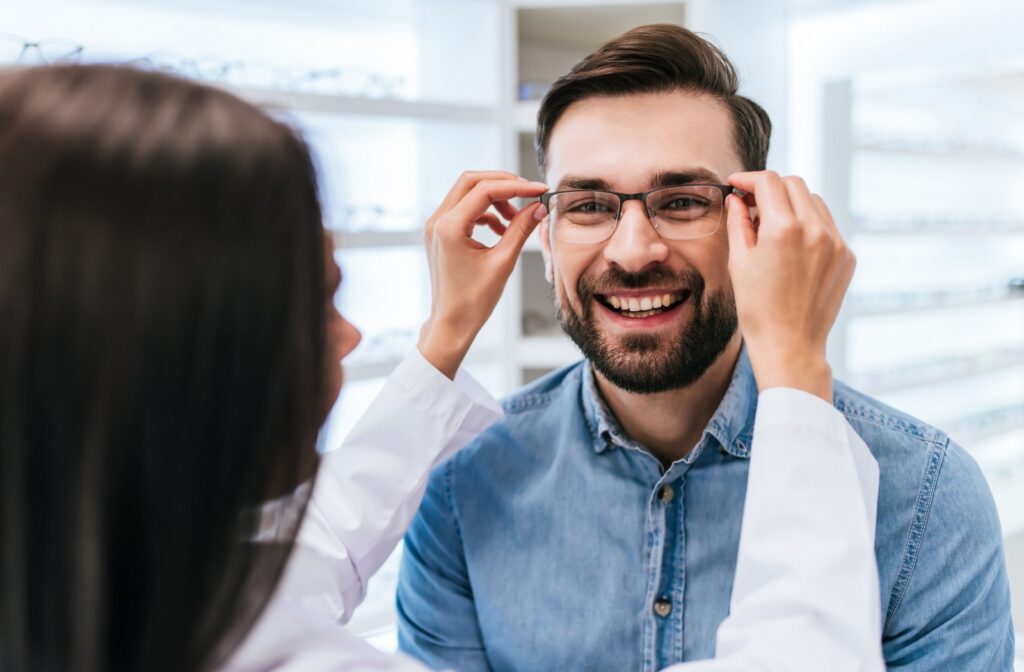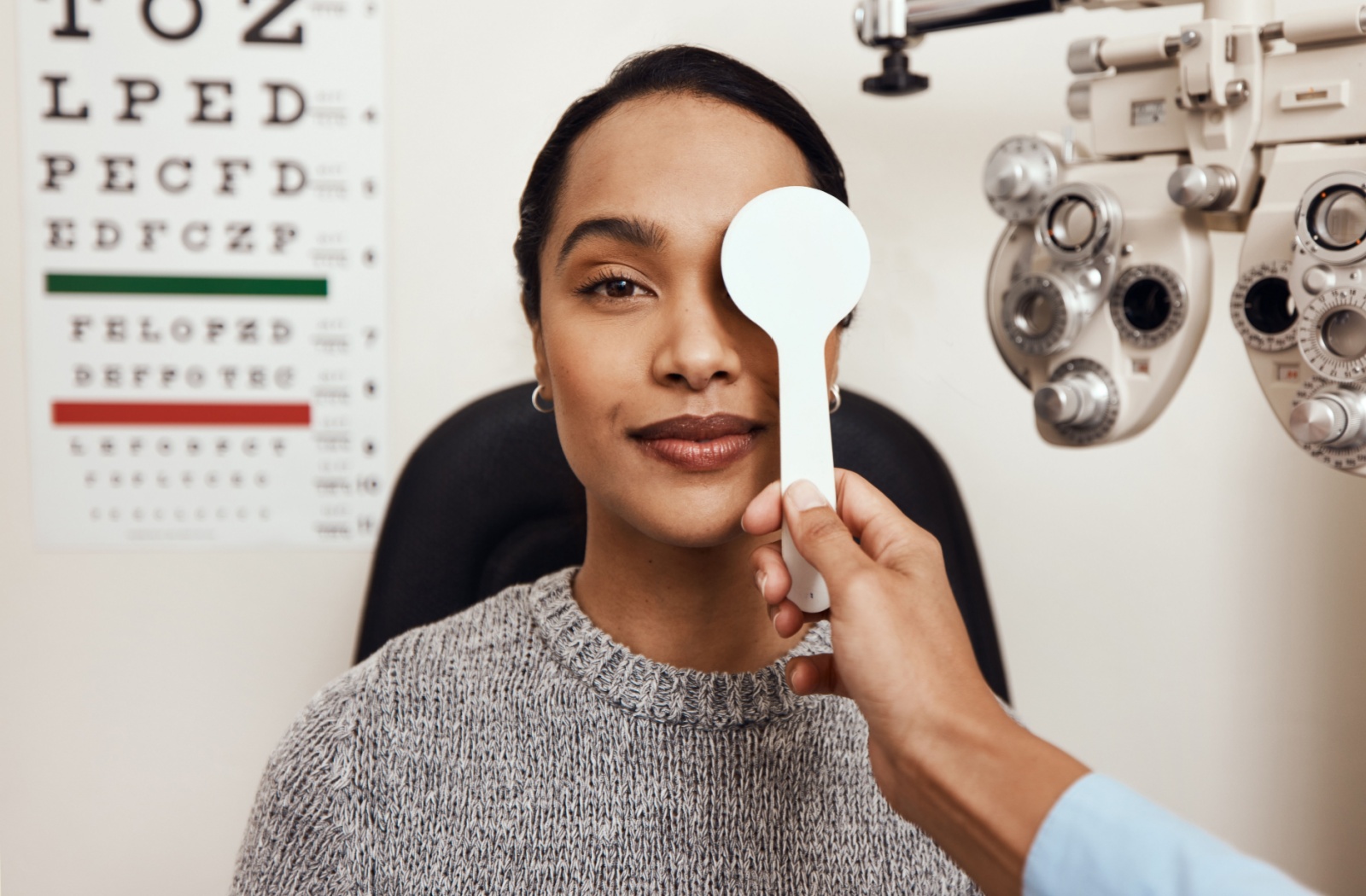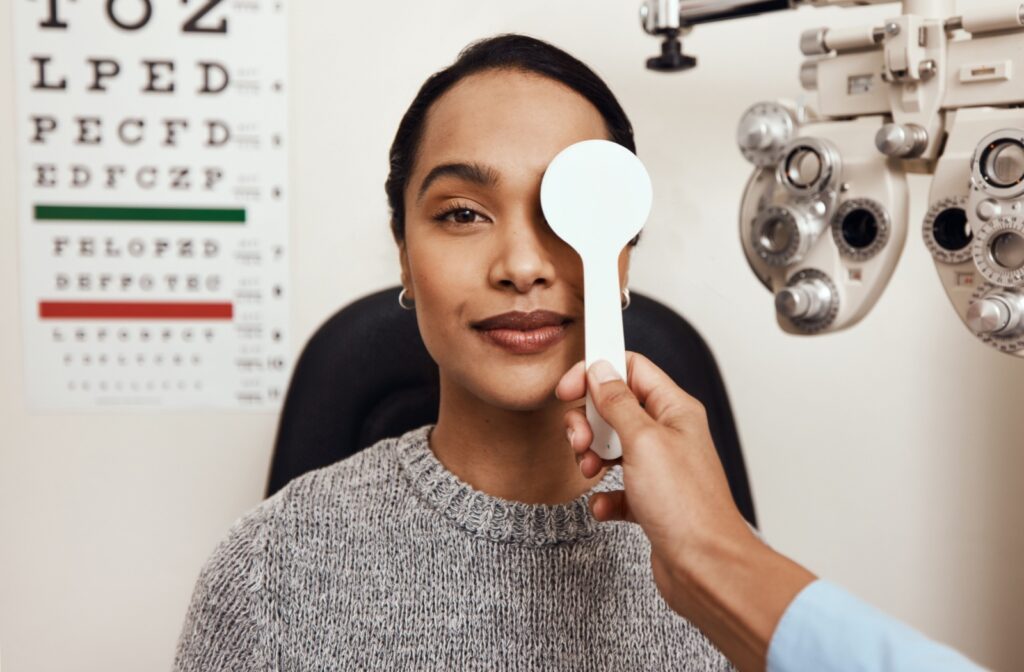If you or someone you care about has myopia, you might wonder whether this common eye condition improves over time. Myopia, also known as nearsightedness, affects millions of people around the world and can significantly impact daily life. From reading and working to enjoying outdoor activities, it shapes the way we experience the world.
Myopia is a progressive condition, meaning it doesn’t improve with age, but that doesn’t mean you’re powerless. With proper care and management, particularly for children, you can help slow its progression and preserve clearer vision for the future.
What is Myopia?
Myopia is a refractive error where nearby objects appear clear, but distant objects appear blurry. This happens when the eyeball becomes too elongated or the cornea is too curved, causing light to focus in front of the retina instead of directly on it.
The exact causes of myopia aren’t fully understood, but it’s generally believed to result from a combination of genetics and environmental factors:
- Genetics: If myopia runs in your family, you may be more likely to develop it.
- Environmental factors: Extended close-up tasks like reading, working on a computer, and limited outdoor time can contribute to the development and progression of myopia.
A comprehensive eye exam can detect myopia early, and treatment options like glasses, contact lenses, and even special eye drops can help manage the condition effectively.
Does Myopia Stabilize or Improve with Age?
While myopia may stabilize in adulthood, it doesn’t typically improve. The rapid eye growth seen in children and teens slows down in adulthood, meaning your vision might not change as drastically. However, some adults may continue to experience a gradual worsening of myopia, though this progression is usually slower.
Regular eye exams are crucial in adulthood to track any changes and update prescriptions as needed. Even though myopia may stabilize with age, once vision is lost due to myopia, it cannot be fully restored.
For children, the goal is to prevent further deterioration of vision as they age. Early intervention can make a significant difference in managing myopia and preserving future sight.
How Lifestyle Affects Myopia Progression
Lifestyle habits play an important role in how quickly myopia progresses, especially in children. Some simple adjustments can reduce eye strain and slow the condition’s progression:
- The 20-20-20 rule: For every 20 minutes of close-up work, take a 20-second break and look at something 20 feet away.
- Proper screen use: Ensure screens are at eye level and have adequate lighting to reduce strain.
- Outdoor time: Studies suggest that spending more time outdoors, especially in natural light, can help slow the development of myopia in children. Focusing on distant objects helps the eye develop properly.
Incorporating these habits into your daily routine can significantly reduce eye strain and promote better long-term eye health.

Managing Myopia: Effective Solutions for All Ages
Although myopia cannot be reversed, there are several advanced treatment options that can slow its progression and improve quality of life:
Atropine Eye Drops
These low-dose drops help slow the eye’s growth in children with myopia, managing progression without correcting vision. They’re a safe and effective part of a treatment plan, especially when used early.
MiSight Contact Lenses
MiSight lenses are designed for children and use a two-zone design that both corrects myopia and helps slow eye growth. This approach manages myopia progression while providing a glasses-free option.
Corneal Refractive Therapy (CRT)
Worn overnight, CRT lenses reshape the cornea to provide clear daytime vision without glasses or contacts. They also help slow myopia progression by preventing excessive eye growth, ideal for children and adults.
Ortho-K Lenses
Similar to CRT, Ortho-K lenses are worn overnight to gently reshape the cornea. They provide clear vision during the day without the need for glasses or daily contacts, while also helping slow myopia progression, making them a great option for both kids and adults.
Insurance Accepted for Myopia Care
We understand that managing myopia can involve various treatments, and we’re committed to making care as accessible as possible. At Envision, we accept a wide range of insurance plans, including major government plans like Medicare, Medicaid, and Tricare, as well as private insurance providers such as United Health, Humana, Anthem BCBS, and Aetna.
We also work with key vision plans like VSP, Spectera, and EyeMed, ensuring you can receive the myopia management treatments you need.
See the Future Clearly with Proactive Myopia Care
Taking care of myopia doesn’t just change how you see today—it’s an investment in your visual health for the future. Whether you’re adjusting daily habits or exploring advanced management options, early intervention can make a significant impact on preserving vision and reducing future complications. If you or a loved one is affected by myopia, it’s essential to get proactive about eye care. Our team of experienced professionals at Envision Eye Care is here to help guide you toward the best solutions for myopia management. Contact us today to schedule an eye exam and learn how we can help you protect your vision for the years ahead.



